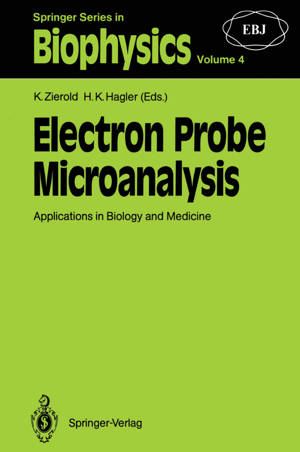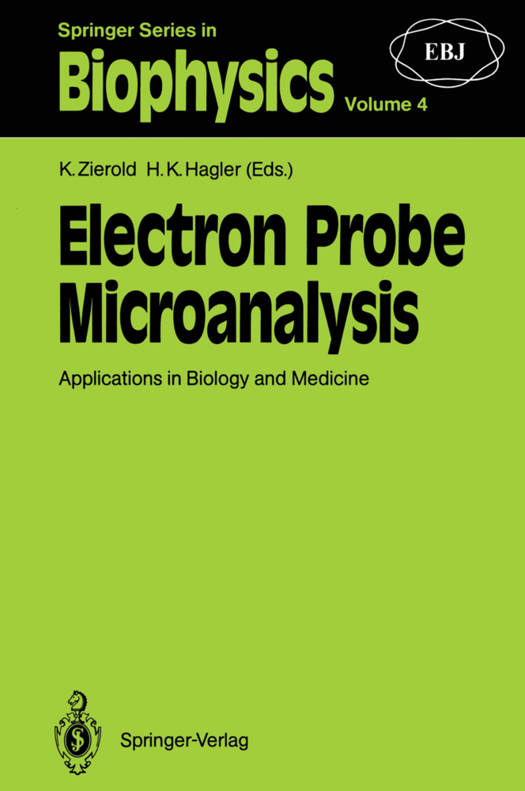
- Afhalen na 1 uur in een winkel met voorraad
- Gratis thuislevering in België vanaf € 30
- Ruim aanbod met 7 miljoen producten
- Afhalen na 1 uur in een winkel met voorraad
- Gratis thuislevering in België vanaf € 30
- Ruim aanbod met 7 miljoen producten
Zoeken
Electron Probe Microanalysis
Applications in Biology and Medicine
€ 168,45
+ 336 punten
Omschrijving
The aim of electron probe microanalysis of biological systems is to identify, localize, and quantify elements, mass, and water in cells and tissues. The method is based on the idea that all electrons and photons emerging from an electron beam irradiated specimen contain information on its structure and composition. In particular, energy spectroscopy of X-rays and electrons after interaction of the electron beam with the specimen is used for this purpose. However, the application of this method in biology and medicine has to overcome three specific problems: 1. The principle constituent of most cell samples is water. Since liquid water is not compatible with vacuum conditions in the electron microscope, specimens have to be prepared without disturbing the other components, in parti- cular diffusible ions (elements). 2. Electron probe microanaly- sis provides physical data on either dry specimens or fully hydrated, frozen specimens. This data usually has to be con- verted into quantitative data meaningful to the cell biologist or physiologist. 3. Cells and tissues are not static but dynamic systems. Thus, for example, microanalysis of physiolo- gical processes requires sampling techniques which are adapted to address specific biological or medical questions. During recent years, remarkable progress has been made to overcome these problems. Cryopreparation, image analysis, and electron energy loss spectroscopy are key areas which have solved some problems and offer promise for future improvements.
Specificaties
Betrokkenen
- Uitgeverij:
Inhoud
- Aantal bladzijden:
- 322
- Taal:
- Engels
- Reeks:
- Reeksnummer:
- nr. 4
Eigenschappen
- Productcode (EAN):
- 9783642744792
- Verschijningsdatum:
- 16/12/2011
- Uitvoering:
- Paperback
- Formaat:
- Trade paperback (VS)
- Afmetingen:
- 156 mm x 234 mm
- Gewicht:
- 476 g

Alleen bij Standaard Boekhandel
+ 336 punten op je klantenkaart van Standaard Boekhandel
Beoordelingen
We publiceren alleen reviews die voldoen aan de voorwaarden voor reviews. Bekijk onze voorwaarden voor reviews.







